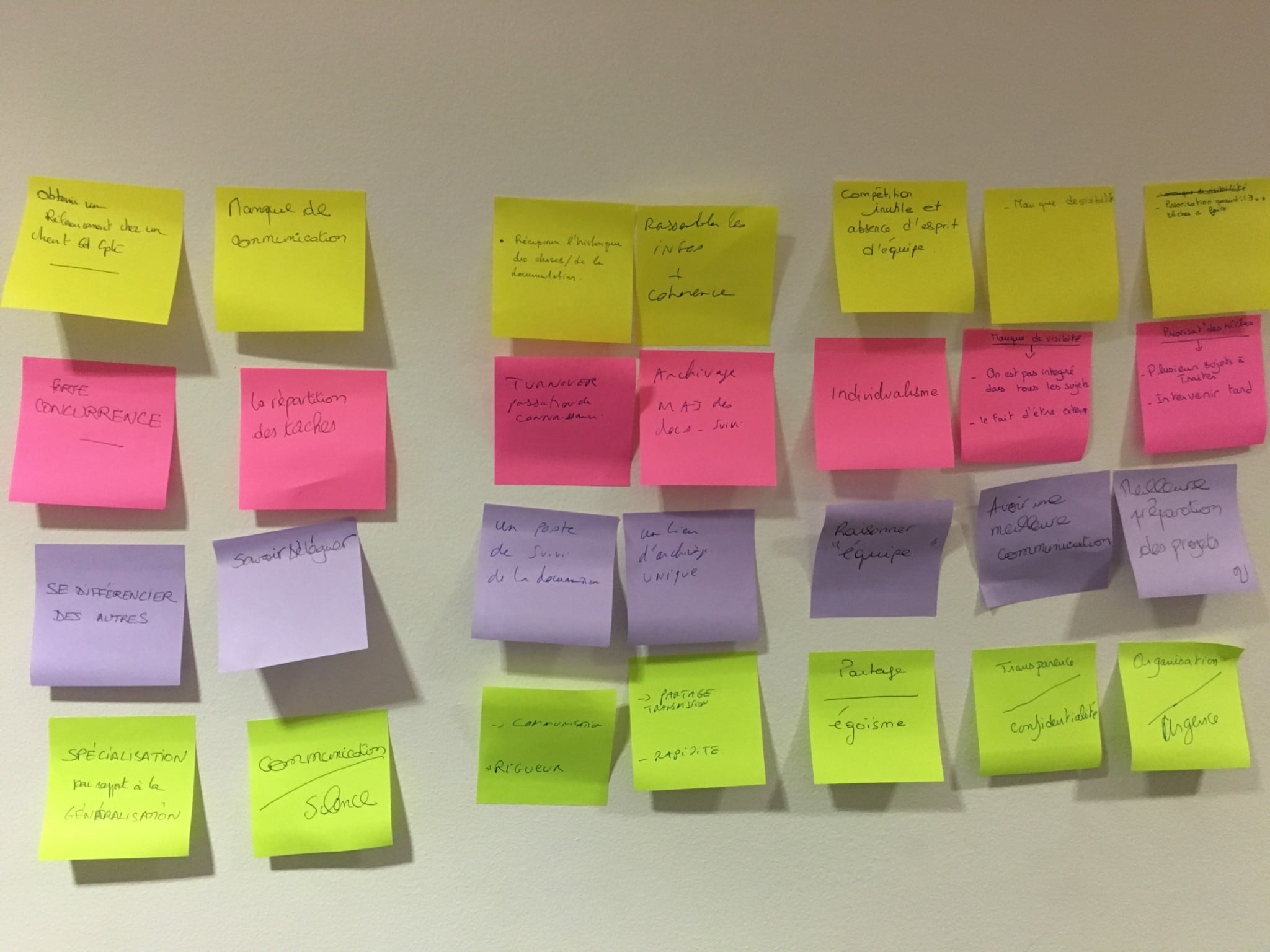On m’a demandé dernièrement d’animer 2 sessions de formation de 3h pour un groupe de 6-8 personnes, essentiellement formé de consultants métier et d’un commercial.
L’objectif énoncé par le client était de sensibiliser ses collaborateurs aux « différentes méthodes agiles », tout particulièrement aux pratiques liées au rôle de « Product Owner », comme la gestion de la documentation agile par l’écriture de « User Stories ».
Au vu du temps qu’il m’était accordé et du format particulier en fin de journée, j’ai décidé de ne pas répondre directement à la demande du client, mais mieux encore : pourquoi ne pas faire émerger les concepts fondamentaux des participants et leur faire vivre une expérience agile ?
People don’t buy what you do, they buy why you do it – Simon Sinek
En effet, les mots ont un sens et le terme Agile a été bien trop galvaudé depuis sa popularisation, comme le terme coach d’ailleurs, ce qui peut rendre la tâche d’un coach agile problématique !
Ainsi, il me paraissait pertinent d’établir de bonnes fondations, d’expliquer le pourquoi de l’Agile pour que les pratiques en découlent plus facilement et leur fassent sens. Après tout, c’est un état d’esprit n’est-ce pas ? 😉
J’ai débuté par un atelier d’émergence des valeurs que m’avait recommandé Christophe Keromen que je remercie au passage (lien de l’article initial ici).
Description de l’atelier
Etape 1 : Emergence des problèmes

- Après avoir disposé des images de photo-langage sur la table, j’ai invité les participants à en choisir une faisant écho au problème principal qu’ils rencontraient au travail. (2′)
Note: certains participants peuvent ne pas réussir à choisir un problème parmi ceux qu’ils rencontrent, il faut alors les inviter à prioriser. Après tout, n’est-ce pas une des tâches principales d’un Product Owner ? 😉
- Pour montrer l’exemple et détendre l’atmosphère, j’ai commencé.
- Puis j’ai proposé à chacun (2′ max par personne):
- de se lever,
- de se présenter,
- de montrer son image en décrivant son problème,
- de l’inscrire sur un post-it jaune,
- et de l’afficher au mur, visible de tous.
- de se lever,
Etape 2 : Emergence des causes

Après avoir identifié les problèmes principaux, attaquons nous à la recherche des causes potentielles.
- J’ai demandé aux participants de déterminer en binôme quelles
- Parmi toutes les causes trouvées, de prioriser et de déterminer la cause la plus importante selon eux pour leur problème. (5’)
- Puis chacun l’inscrit sur un post-it rose et va le placer sous le problème correspondant.
Etape 3 : Emergence d’axes d’amélioration

Après avoir identifié les causes potentielles, allons de l’avant et réfléchissons aux axes d’amélioration possibles.
- J’ai invité les participants à déterminer en binôme quels pourraient être les axes d’amélioration vis à vis de leur problème. (5’)
- Parmi tous les axes d’amélioration trouvés, à prioriser et à déterminer celui qui serait le plus efficient pour eux. (5’)
- Chacun l’inscrit sur un post-it violet et va le placer sous la cause du problème correspondant.
Etape 4 : Emergence des valeurs

Maintenant, point culminant de l’atelier, après avoir relevé des problèmes, des causes potentielles et des axes d’amélioration envisageables, prenons un peu de hauteur pour voir quelles valeurs nous pouvons identifier.
Définition d’une valeur selon Wikipédia:
Ce qui est posé comme vrai, beau, bien, d’un point de vue personnel ou selon les critères d’une société et qui est donné comme un idéal à atteindre, comme quelque chose à défendre.
- J’ai invité les participants à déterm
- Puis, chacun inscrit les 2 couples de valeurs – séparées d’un trait -sur un même post-it vert et va le placer sous l’axe d’amélioration du problème correspondant.
Résultat obtenu en fin d’atelier

Les valeurs émergées de ce groupe étaient les suivantes :
- Spécialisation plus que Généralisation
- faire une chose bien plutôt que de s’éparpiller inutilement
- Communication plus que Silence
- Communiquer plutôt que garder tout pour soi
- Communication plus que Rigueur
- Communiquer plutôt que suivre des règles trop strictes
- Partage, Transmission plus que Rapidité
- Prendre le temps de partager au lieu de vouloir aller trop vite
- Partage plus que Egoïsme
- Transparence plus que Confidentialité
- Organisation plus que Urgence
- S’organiser plutôt que de tout faire dans l’urgence
N’est-ce donc pas une excellente base d’échanges et d’introduction au Manifeste Agile? 🙂
Conclusion
Au lieu de tenter de pousser des connaissances (surtout en fin de journée), cet atelier expérientiel est dynamique et permet aux participants de partir de sujets qui les concernent pour s’approprier les valeurs agiles – centrées sur des comportements de personnes. Il a permis d’engager les personnes dès le début de la formation en démystifiant un petit peu ce que peut représenter le terme Agile pour beaucoup de personnes. En effet, cela permet de montrer que les concepts bien qu’un peu idéalistes aux premiers abords, se basent sur des réalités pragmatiques toujours d’actualité.
De plus, par le cadre de l’atelier, il est possible d’introduire en filigrane des notions de Scrum – un cadre ça tombe bien ! – en respectant rigoureusement les timeboxes données, en insistant sur la priorisation des éléments, le travail collaboratif, l’échange à répétition et tout cela supporté par un management visuel.
Testez-le, vous aurez de belles surprises ! 🙂










Une réponse
Excellent article qui a permis au néophyte que je suis de me familiariser avec les concepts fondateurs de l’agilité.
P.S. : Olivier, j’entreprends de lire chaque article de ton blog au cours des prochaines semaines, depuis le temps que je voulais le faire ! 😉